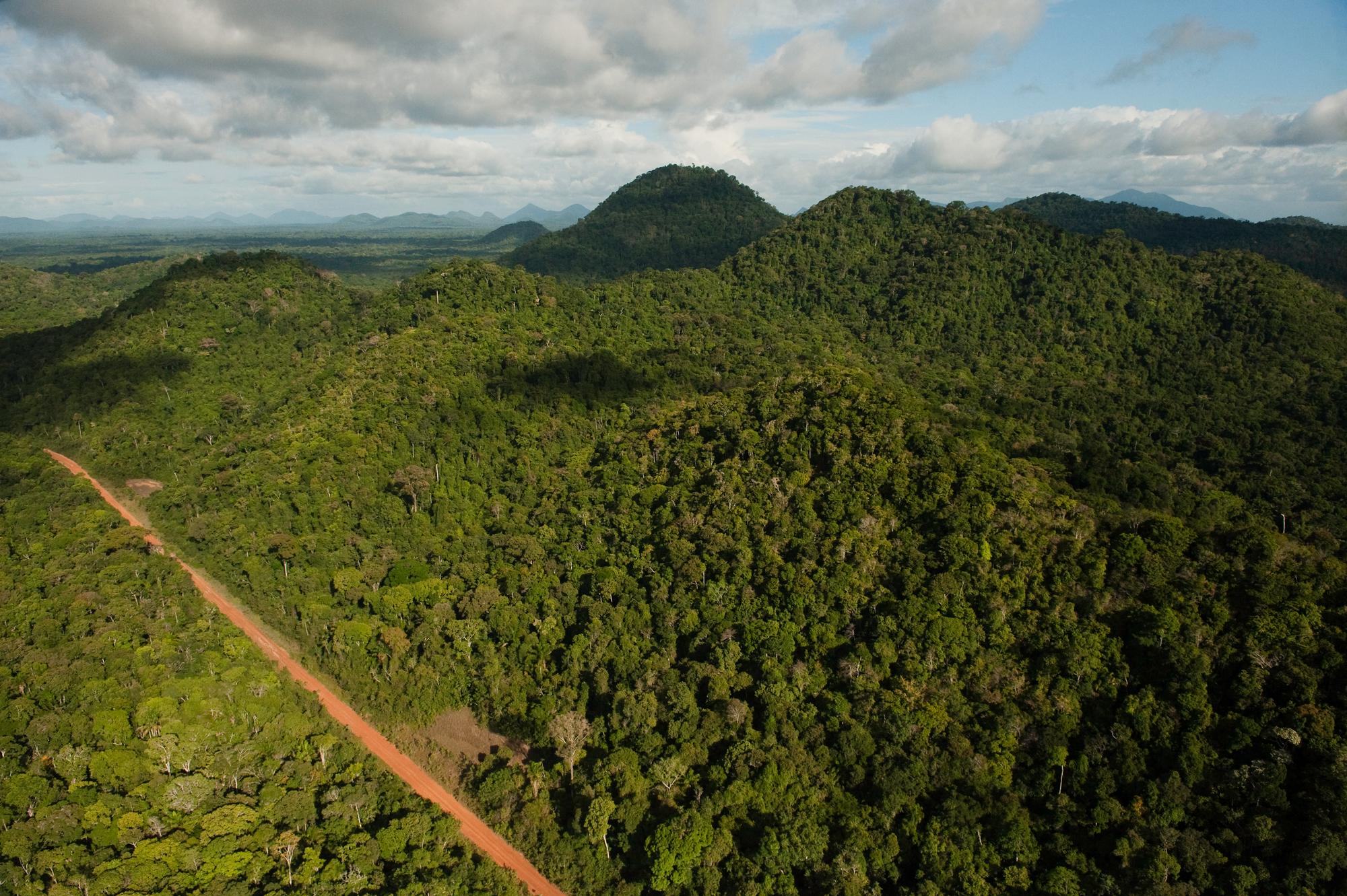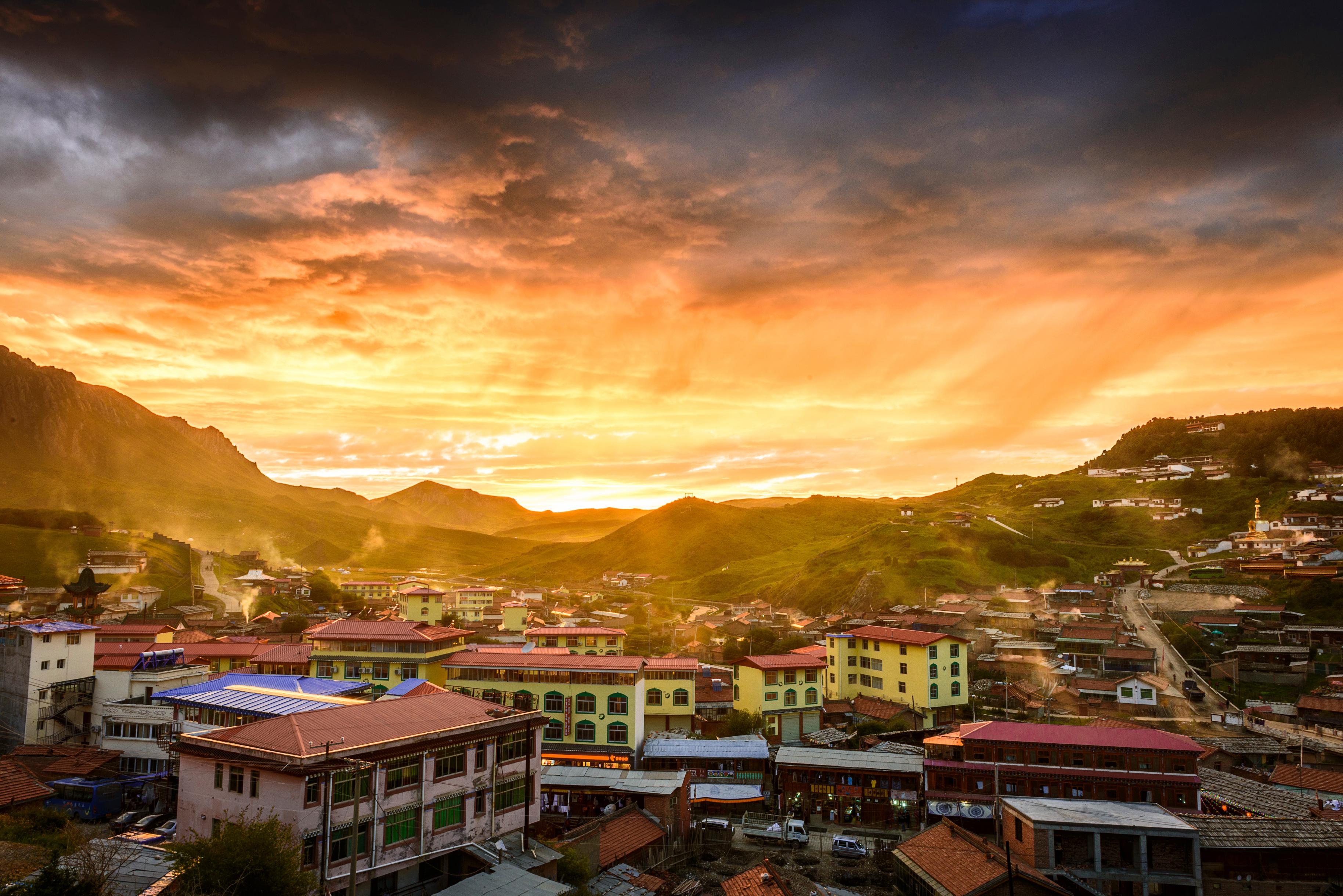
What do you need to know about climate change?
We’re already seeing the effects of human-caused climate change — but nature can help. Protecting nature today ensures a more sustainable future.
Share these facts about climate change:
421 parts per million
In 2024, the average concentration of carbon dioxide (CO2) in our atmosphere was 421.73 ppm1 — the highest in human history and more than 50% higher than pre-industrial levels of CO2.
2024 was the hottest year on record
Analysis by NOAA shows that average global temperatures in 2024 were 2.3 degrees F (1.28 degrees C) warmer than the 20th-century average — beating the record set in 2023.2 This follows 15 consecutive months of monthly temperature records.
20% of emissions
As much as 20 percent of all global greenhouse gas emissions caused by humans are due to deforestation3 — exceeding the emissions from all of the passenger vehicles on the planet.4
Nature is an untapped solution
, providing at least a third of the mitigation action needed5 to prevent the worst climate change scenarios. Yet nature-based solutions receive only 3 percent of all climate funding.6
Fight climate change, improve livelihoods — naturally
Scaling up , such as restoring degraded forests, could create as many as 20 million new jobs.7 In total, ecosystem restoration creates 3.7 times as many jobs as oil and gas production per dollar.8
A disturbing trend
According to the EU’s Copernicus Climate Change Service, the average global temperature for June 2024 was higher than any June on record9 — and July 22, 2024 was the hottest day the world has seen since 1940, when recording started.10

3.6 billion people
As many as 3.6 billion people live in areas of high vulnerability to climate change impacts11 such as droughts, floods, heat waves, extreme weather events and sea-level rise.
Coastal ecosystems are critical
In a single square mile, mangroves hold as much carbon as the annual emissions of 90,000 cars. If they are destroyed, all that carbon is released into the atmosphere, contributing to climate change.12
It’s cheaper to protect nature
Conserving ecosystems is often more cost-effective than human-made interventions. Mangrove trees, which thrive in salty, coastal areas around the world, provide flood protection benefits exceeding US$ 65 billion per year.13
Nations are uniting
One hundred ninety-five countries have ratified the 2015 Paris Agreement14, agreeing to limit global warming and adapt to climate change, partly by protecting nature.
References
- National Oceanic and Atmospheric Administration. (2025, January). Global Monitoring Laboratory. https://gml.noaa.gov/ccgg/trends/global.html
- National Aeronautics and Space Administration. (2025, January). Temperatures Rising: NASA Confirms 2024 Warmest Year on Record. https://www.nasa.gov/news-release/temperatures-rising-nasa-confirms-2024-warmest-year-on-record/
- Grantham Research Institute on Climate Change and the Environment. (2023, February). What is the role of deforestation in climate change and how can ‘Reducing Emissions from Deforestation and Degradation’ (REDD+) help?. The London School of Economics and Political Science. https://www.lse.ac.uk/granthaminstitute/explainers/whats-redd-and-will-it-help-tackle-climate-change/
- DeCicco, J., Fung, F., An, F. (2006). Global Warming on the Road: The climate impact of America’s automobiles. Environmental Defense. https://www.edf.org/sites/default/files/5301_Globalwarmingontheroad_0.pdf
- Correction to Supporting Information for Griscom et al., Natural climate solutions. (2019). Proceedings of the National Academy of Sciences, 116(7), 2776–2776. https://doi.org/10.1073/pnas.1900868116
- Buchner, B., Clark, A., Falconer, A., Macquarie, R., Meattle, C., Wetherbee, C. (2019). Global Landscape of Climate Finance 2019. Climate Policy Initiative. https://climatepolicyinitiative.org/publication/global-landscape-of-climate-finance-2019/
- United Nations Environment Programme. (2022, December 8). Nature-based Solutions can generate 20 million new jobs, but “just transition” policies needed [Press release]. https://www.unep.org/news-and-stories/press-release/nature-based-solutions-can-generate-20-million-new-jobs-just
- Jaeger, J. (2021, October 18). Climate-friendly Investments Can Create More Jobs Per Dollar than Polluting Alternatives. World Resources Institute. https://www.wri.org/insights/green-investments-create-more-jobs-polluting-alternatives
- Copernicus Climate Change Service. (2024, July 10). June 2024 marks 12th month of global temperatures at 1.5°C above pre-industrial levels. https://climate.copernicus.eu/june-2024-marks-12th-month-global-temperatures-15degc-above-pre-industrial-levels
- Copernicus Climate Change Service. (2024, July 25). New record daily global average temperature reached in July 2024. https://climate.copernicus.eu/new-record-daily-global-average-temperature-reached-july-2024
- Intergovernmental Panel on Climate Change. (2022). Key Findings of the AR6 Report on Impacts, Adaptation and Vulnerability [Report]. https://www.ipcc.ch/site/assets/uploads/2022/06/WGII_AR6_Presentation_SB56.pdf
- Conservation International. Protect Our Oceans. https://www.conservation.org/act/protect-our-oceans Accessed: 2023-03-10
- Menéndez, P., Losada, I.J., Torres-Ortega, S. et al. The Global Flood Protection Benefits of Mangroves. Sci Rep 10, 4404 (2020). https://doi.org/10.1038/s41598-020-61136-6
- United Nations Framework Convention on Climate Change. Paris Agreement - Status of Ratification. https://unfccc.int/process/the-paris-agreement/status-of-ratification. Accessed: 2025, January.